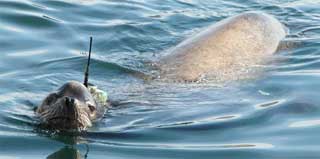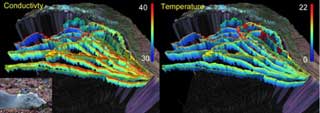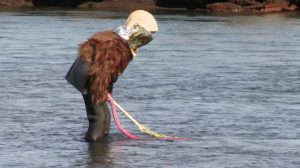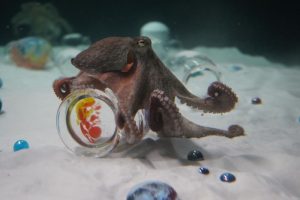Biologists and oceanographs are enlisting 23 species of apex predators to serve as ocean sensors, outfitting them with electronic tags that report on oceanographic conditions and, in many cases, transmit the data via satellite. The data yield new information about the migrations and behavior of the animals and about the North Pacific Ocean.
 California sea lions with equipment
California sea lions with equipment
Daniel Costa, at the University of California, Santa Cruz, is working with Barbara Block of Stanford University, on this Census of Marine Life project called Tagging Of Pacific Pelagics (TOPP). He is also collaborating with researchers at the Sea Mammal Research Unit (SMRU) at the University of St. Andrews in Scotland on a project around Antarctica called Southern Elephant Seals as Oceanographic Samplers (SEaOS).
The tags can capture an animal’s location, swim speed, and the depth and duration of dives, as well as the temperature and salinity of the seawater and how that changes with depth. As the sea lions travel along the coast diving for food, their tags transmit data back to the researchers via satellite.
 Elephant seals can record detailed profiles of water temperature and salinity with depth as they travel across the North Pacific Ocean
Elephant seals can record detailed profiles of water temperature and salinity with depth as they travel across the North Pacific Ocean
The tags are miniaturized computers fitted with various sensors and fixed onto the fur of a seal or sea lion. They will stay on for several months before falling off when the animal molts. Data recorded during a dive are transmitted to satellites when the animal comes to the surface to breathe.
“Much of the world’s weather is determined by what happens in the Antarctic, so understanding the Southern Ocean is a key to understanding global climate,” Costa said.
Via eurekalert.
Image source.
Related: Cellphone technology to track dolphins and elephants.







